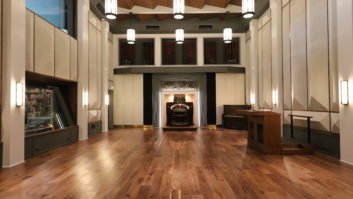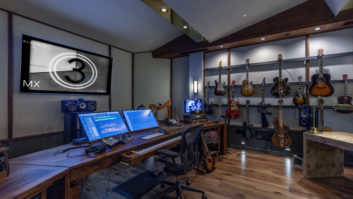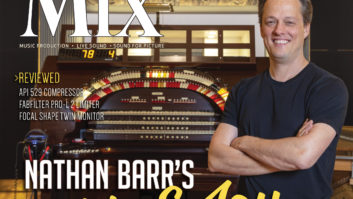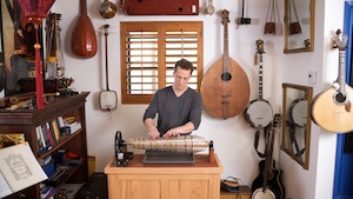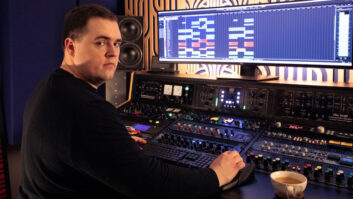Before the start of any project, there’s that “dream big” moment when anything is possible and every detail, large or small, is fluid and changeable—even a detail as massive as a Wurlitzer Theater Pipe Organ. Fitting that through the door of a dream studio is not a challenge at all.
In reality, it took award-winning composer Nathan Barr six years to make that happen. His new recording studio, called Bandrika—named after one of Barr’s favorite early Hitchcock films, The Lady Vanishes—is designed around the 1928 Wurlitzer Theater Pipe Organ that once graced Fox Studios’ Newman Scoring Stage. Theater organ expert Ken Crome and his team at Crome Organ Company spent four years restoring the instrument in Reno, Nev. Then, they transported the organ and thousands of pounds of cabling and equipment to Bandrika in Tarzana, Calif.
“We basically had to design the building around the instrument and then bring the instrument in and install it,” says Barr.
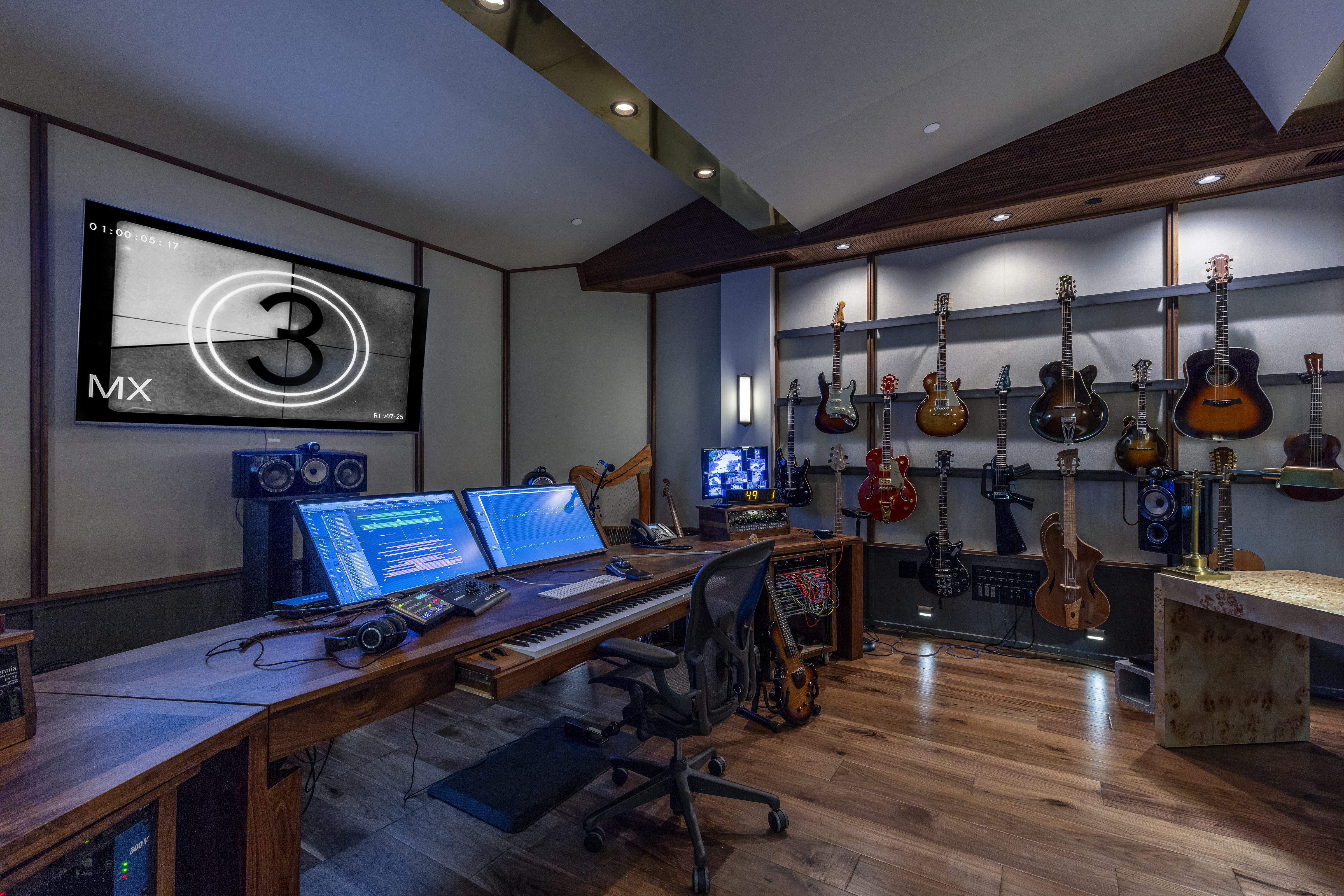
The building itself was once a two-story office building with an open floor plan. Barr, working with Jay Kaufman of Kaufman & Associates architectural acoustic design and consulting in Sherman Oaks, Calif., had half of the second floor removed so Bandrika’s stage ceiling height could reach 24 feet.
They also tore out most of the existing foundation, replacing it with one that could support several floating floors. The massive Wurlitzer Theater Organ— with over 1,300 pipes, a percussion chamber, and a profusion of mechanical and wiring components—occupies six rooms and two floors of the studio and sits on its own floating structure, which is floating separately from the stage, which is floating separately from the control room. “There is absolute isolation between these three structures within the building,” says Barr. Outside the studio, a sound-isolated shed houses the organ’s original Spencer Blower, which provides the wind for the Wurlitzer organ.
“Building a recording studio the right way is an enormous undertaking,” Barr explains. “Doing anything with a pipe organ is an enormous undertaking, and putting a pipe organ in a studio is an entirely different beast altogether. To the best of my knowledge, this is one of the only recording studios in the world with a working pipe organ—especially one so immaculately restored and ready to record.”
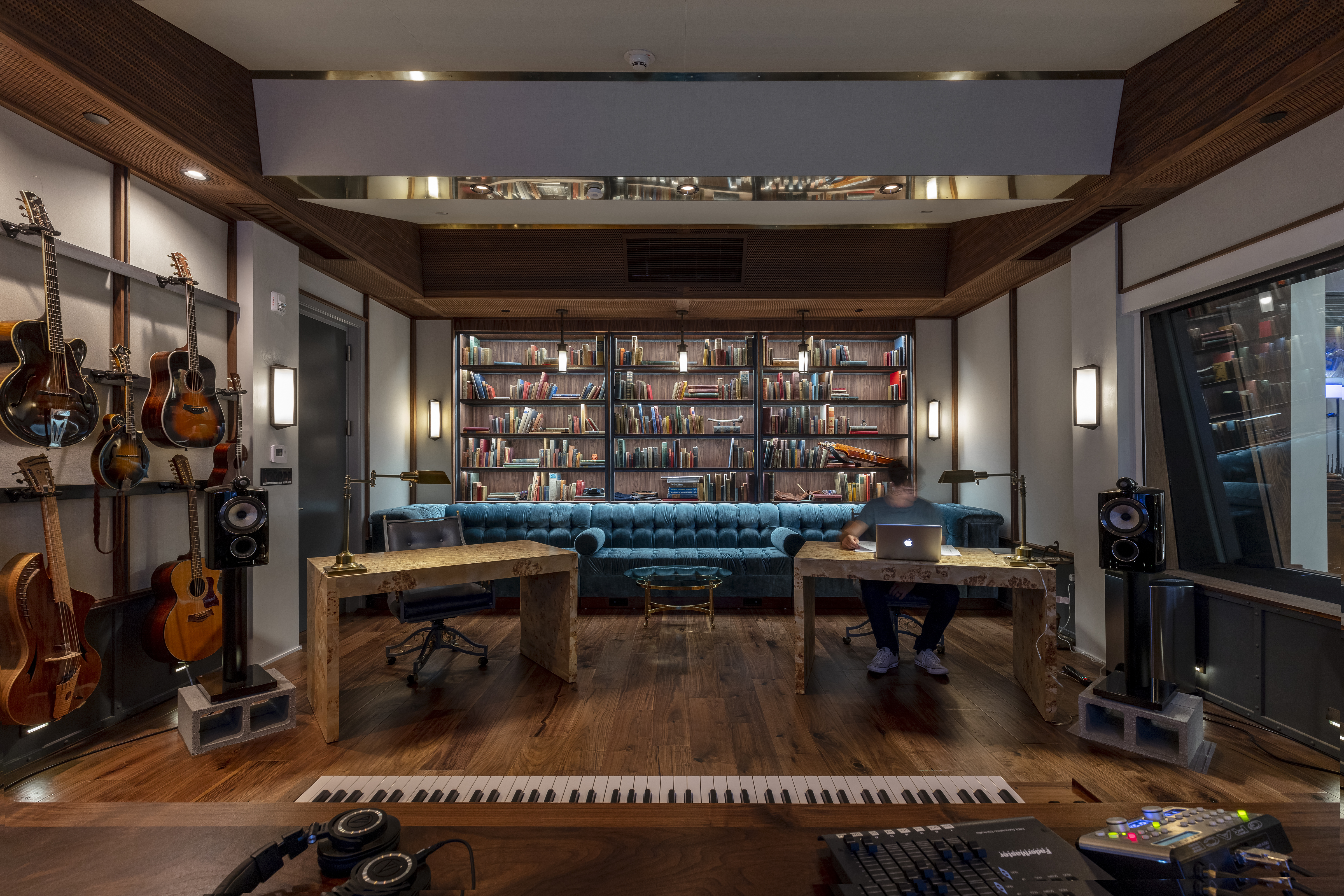
The organ was originally designed to provide accompaniment for silent films, so in addition to traditional organ sounds, it is capable of making sound effects like door bells and train whistles, as well as producing orchestral-type sounds from woodwinds and brass to harp and piano. It literally has its own percussion section.
Related: Nate Barr: Texture and Color in Television Music, by Gary Eskow, April 1, 2014
To harness all that sound potential into a modern workflow, Barr had the organ integrated with Apple’s Logic Pro X via the Uniflex Relay System. “Let’s say I want to play a bass line on the organ to add it to a track, I can actually do that right in Logic, which is kind of amazing,” he says. “You have this 1920s instrument that is being accessed through a contemporary DAW. That’s a cool feature that wouldn’t have been possible without this Uniflex technology.”
The Wurlitzer was just one detail of Barr’s dream for Bandrika. His other impetus for creating the studio was to keep alive the practice of recording real musicians in beautiful spaces. And not just sonically beautiful spaces, but aesthetically beautiful, as well. “The most important thing was that the stage sound incredible and be unique, and we got that,” says Barr. “There are many recording studios with beautiful-sounding rooms that aren’t aesthetically exciting. With Bandrika, we wanted to design a room that looked as beautiful as it sounded.”
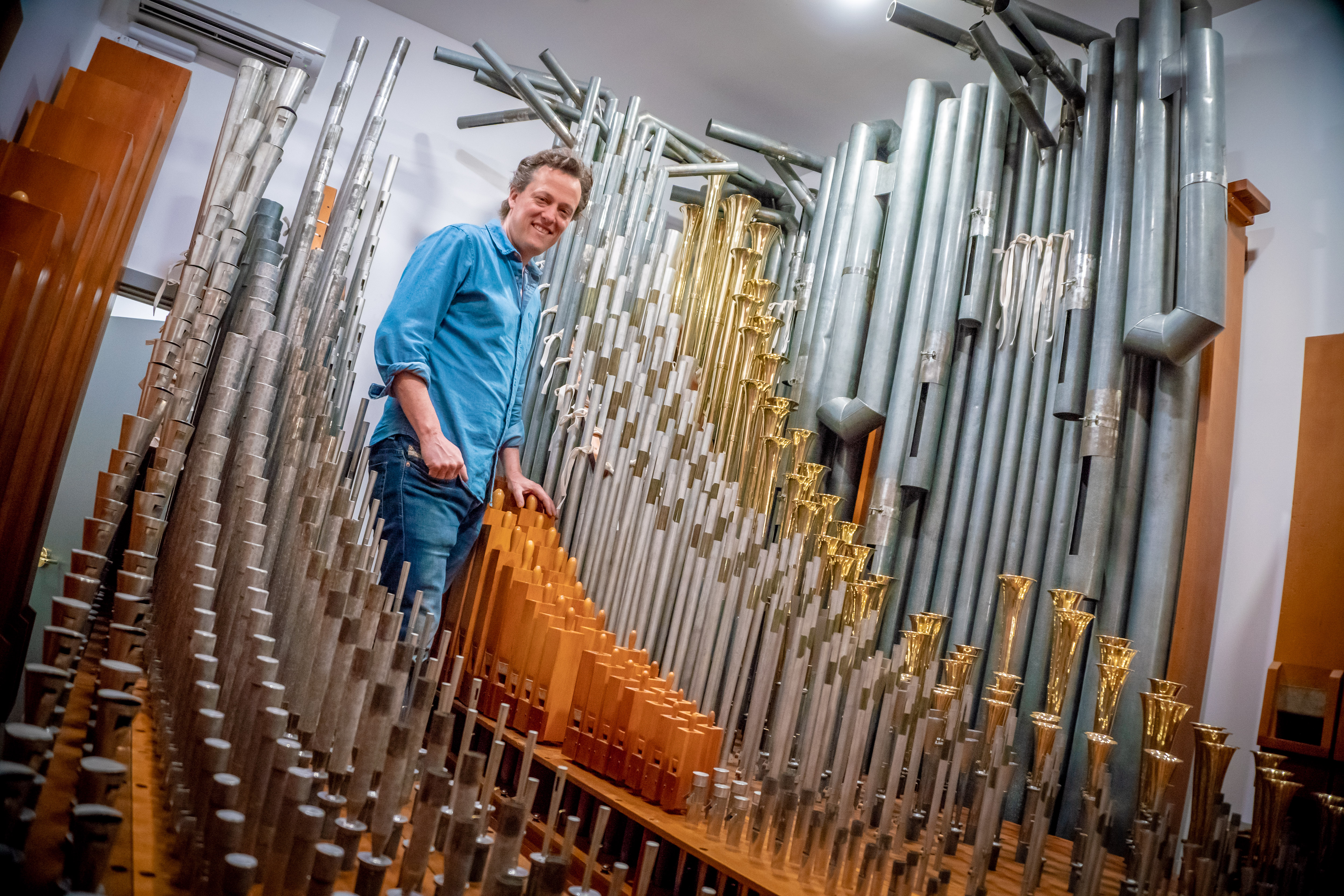
Kaufman was responsible for all the acoustical components of the building and Barr feels he achieved incredible clarity in the space. The stage has over a second and a half of reverb time. Twelve acoustic gobos made of walnut — ranging from half height to seven feet to full solid panels, are available to accommodate any size ensemble. “Whether we’re recording orchestra or the organ, every single voice of every single instrument is heard,” Barr says. According to Peter Cobbin, one of the senior engineers at Abbey Road studio for twenty years, it’s one of the best sounding rooms in the world to record in.
As for the look, architect Jeff Soler is responsible for the Art Deco aesthetics, naturally inspired by the organ. Barr, a multi-instrumentalist, has numerous instruments on display (or rather, on hand) around the facility, from mechanical/musical instruments from the early 1900s to an assortment of ukuleles and mandolins on the control room walls. “It feels like a working museum in a way, a museum where you can actually turn things on, pick things up, and play music,” Barr says.
Comfort and functionality are the key words to describe the control room. There’s a full 5.1 surround setup of Bowers & Wilkins monitors, with two 802 D3s for left and right, an HTM2 D3 for center, a DB1D 200-watt subwoofer, and two 805 D3s for rear surrounds, all powered by Rotel amps. The room can comfortably seat up to 14 people. The back wall is a huge bookcase lined with early 20 century tomes of varying height and depth in place of the typical manufactured sound diffuser. “It’s a much more aesthetically pleasing version of a diffusion wall. It feels less corporate and more inviting,” says Barr.
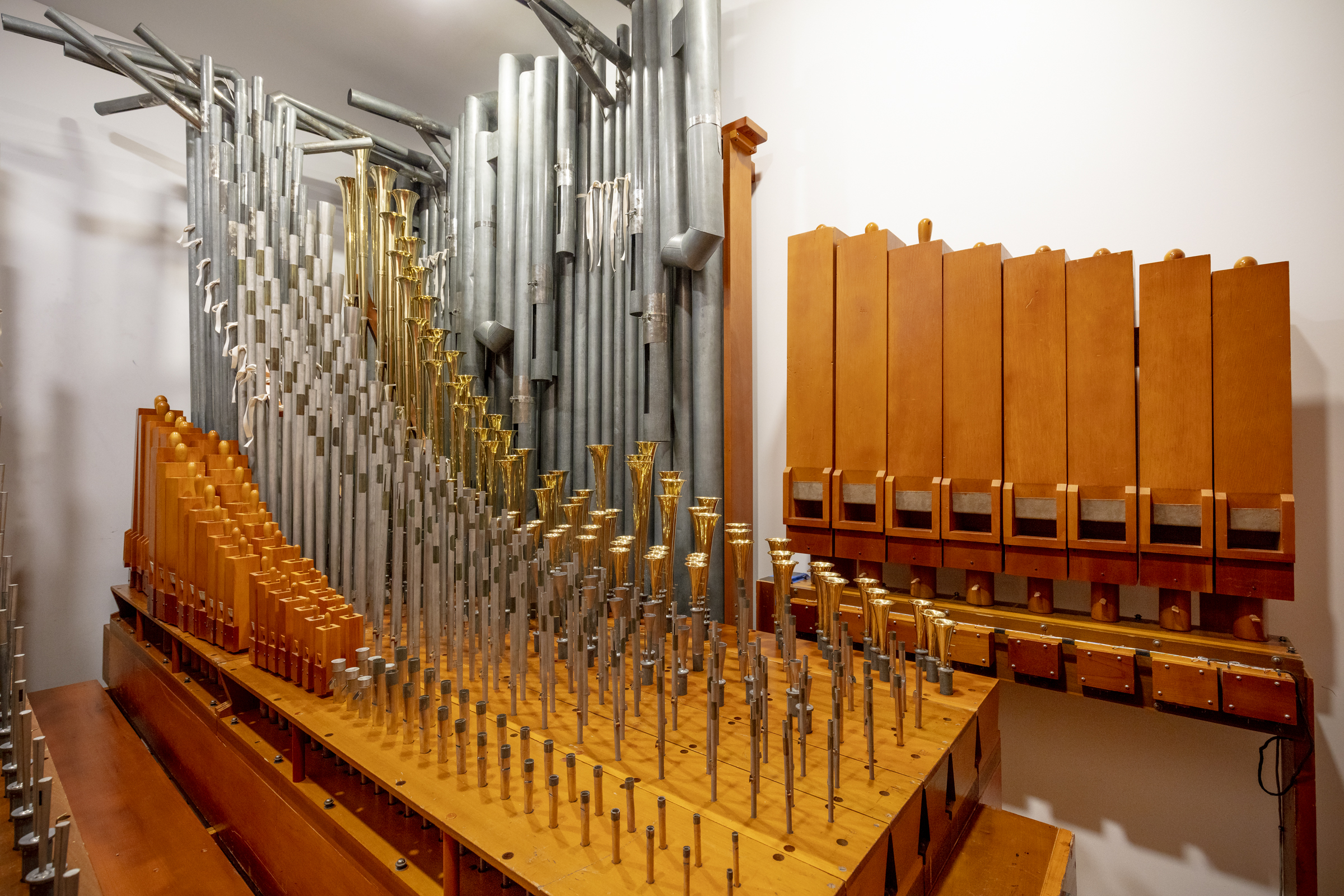
Barr composes for film and television. He’s earned Emmy nominations for his scores on Hemlock Grove and The Americans. So when it came to laying out Bandrika’s floor plan, he chose to position the control room at a 90-degree angle to the stage. This is an ideal orientation for Barr because it allows him to set up the picture monitor in a comfortable sightline and have his computer monitors placed exactly where he wants them, all without obstructing his view of the stage.
“In most recording environments, there’s a giant mixing console that faces the stage through the isolation glass,” he explains. “Usually, the center speaker is right smack in the middle of your view of the stage. Then there’s the TV positioned high above that window. That setup is not perfect for someone like myself who sits everyday, 12 hours a day, writing for film and television.” A custom 18-foot couch faces the picture monitor so that clients can easily see how the cues are working to picture.
Currently, Barr is scoring two projects — Amazon Studio’s upcoming fantasy drama series Carnival Row and Universal Pictures and Amblin’s fantasy adventure film The House with a Clock in Its Walls, opening in theaters this month.
For Carnival Row, Barr’s left-of-center sound palette incorporates some of his more esoteric instruments, such as a glass armonica (designed by Benjamin Franklin in 1761) that he occasionally plays with steel drum mallets, a nyckelharpa, and the bottom pedals of the Wurlitzer Theater organ, which are capable of producing a low, rumbling growl. But the most unusual instrument Barr chose is the kanglang.
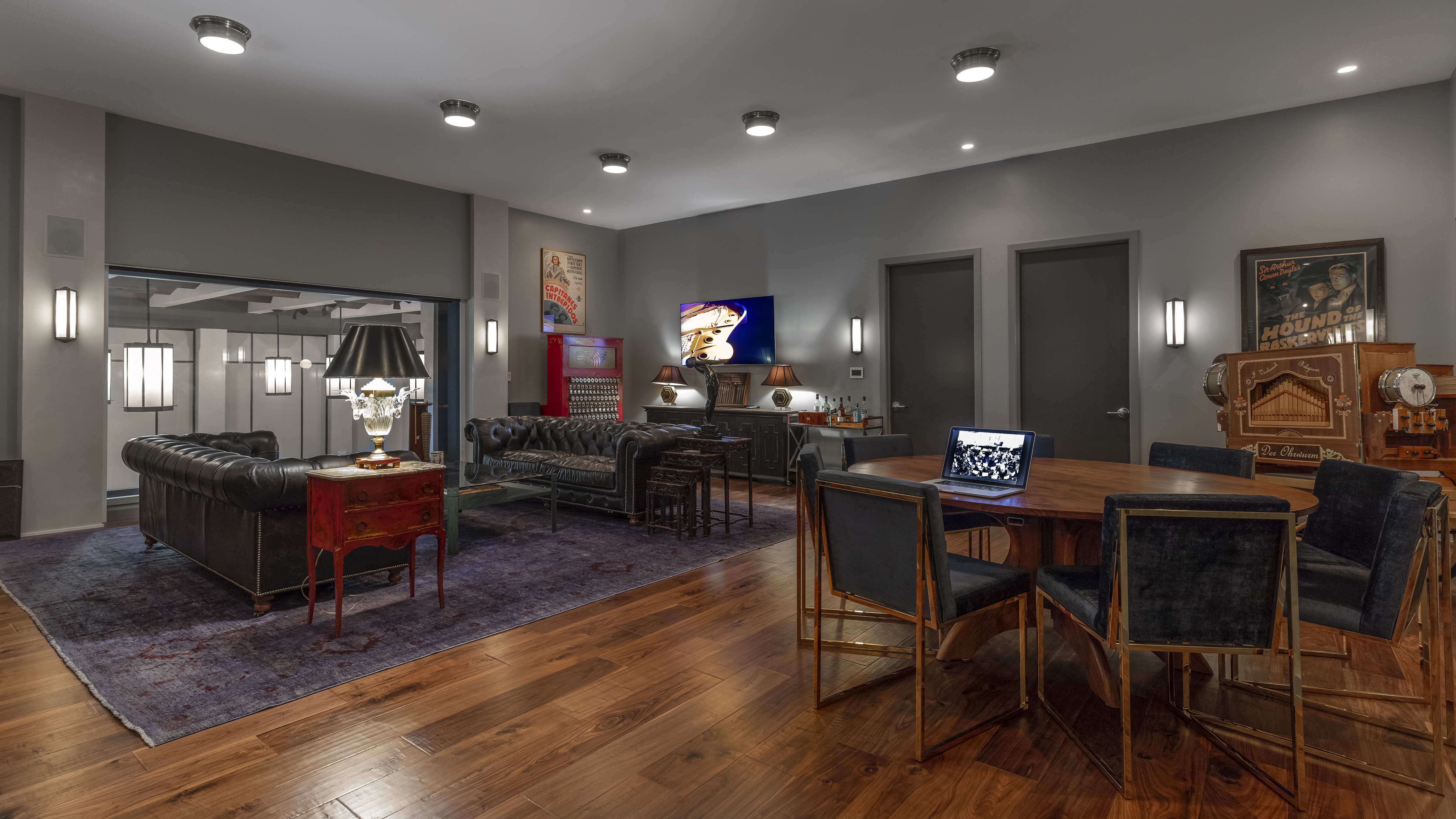
“It’s a human femur from Tibet that’s probably 150 to 200 years old. Some monks when they die have portions of their bones turned into trinkets or instruments,” Barr explains. “The kanglang produces a strange, incredibly unique sound that’s somewhere between music and sound design.”
Barr took a more traditional, orchestral approach to his score for The House with a Clock in Its Walls. “We recorded a 47-piece orchestra, and we did it in sections—strings, then brass, then harp, and then the organ. It was a nice opportunity to explore the full range of the stage, from large ensembles to single instruments,” he says.
Want more stories like this? Subscribe to our newsletter and get it delivered right to your inbox.
Working on two disparate projects at the same time isn’t a challenge for Barr. In fact, it’s quite the opposite. Bouncing back and forth between the different musical styles and palettes of instruments keeps things fresh. And in terms of workflow, “Now that I have this beautiful space packed full of musical instruments, the recording process feels more creative and exciting than ever,” he says. “I’ll set up some mics on the stage and record an organ part or a cello part and then come back in the control room and review it.”


